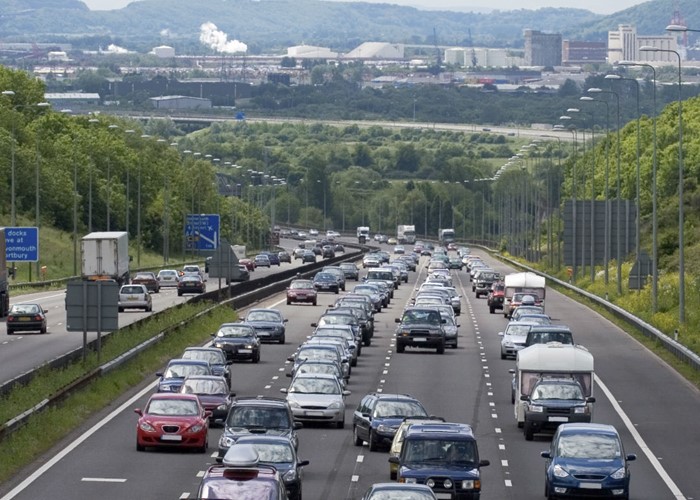Wintry weather, crashes and car insurance

As the temperatures drop to minus 19 degrees Celsius in some parts of the country, we suggest ten ways to avoid making a claim on your car insurance.
It’s one of the coldest winters on record, with Pershore in Worcestershire winning the race for the coldest overnight temperature at the weekend. It recorded -18.7C, but the rest of the country didn’t fare much better, with Castleberg in County Tyrone coming in at -18C and Benson in Oxfordshire taking third place with -17.8C.
Obviously, the last thing you need at Christmas is a road-traffic accident which pushes up your premium for car insurance. Alas, low temperatures, combined with shorter daylight hours, make driving at this time of year much trickier. In particular, a sudden temperature drop can lead to ‘black ice’ forming on ungritted roads, which is the cause of many sudden impacts.
As with most things, prevention is better than cure, so it makes sense to prepare for difficult conditions and to drive with extra caution. This is especially the case if you’re driving long distances over Christmas. So, here are ten tips on avoiding crashes, crunches and collisions over Yuletide, courtesy of lovemoney.com and the RAC:
1. Take your time.
If you have a long drive planned over Christmas, then leave plenty of extra time to reach your destination if conditions worsen. Check local weather and traffic conditions before setting off.
2. Drive slowly
This is the best way to tackle poor weather conditions and unexpected hazards. As the old saying goes: more haste, less speed. Stopping distances are longer in icy conditions.
3. Avoid driving at night
Whenever possible, avoiding driving in the evening or at night. Instead, make full use of the limited daylight hours on offer at this time of year.
4. Keep your car properly serviced.
Ensure that its battery is fully charged and check all four tyres are in good condition, making sure that they are at the correct pressure, that tread depth is good, and there is no obvious damage to tyre surfaces. Make sure that all front and rear lights are clean and working; replace any faulty or blown bulbs. And fill it up with petrol. That way, if you do get stuck, you can at least keep warm.
5. Clear your windscreen, windows and lights thoroughly
Make sure that the windscreen, windows and the lights are completely clear and clean before setting off, because you can’t drive safely if you can’t see clearly.
6. Remove any snow from your roof
This can fall off when you’re driving and cause a dangerous white-out for other drivers. Believe it or not, you face a £60 fine if you drive with snow on your roof, as well as three points on your license. Check Rule 229 of the Highway Code!
7. Charge your mobile phone
Fully charge your mobile phone before setting off on long-distance trips, and take a car-phone charger with you. In extreme weather, it will be your lifeline to emergency and breakdown services.
8. Be prepared for an emergency
Keep an emergency kit in your car, including an ice scraper, de-icer, electric torch and batteries, warm blanket, extra clothes, a shovel and first-aid kit. These could make a cold night in your vehicle a lot less perilous! Have the details of your breakdown cover to hand, including a contact number and your policy information. (You do have breakdown cover, don’t you? If not, try AutoAid at only £37 a year.)
9. Listen and look
Remember the advice ‘stop, listen and look’ from when you were at school? It applies here, although not necessarily in that order. If the noise from your tyres on the road suddenly becomes quiet, it is likely you are driving on ice. Similarly, black ice can look exactly like wet patches on the road surface. Look out for it, particularly on bridges and overpasses. It tends to form here because the cold air can pass above and beneath the road surface. If you think you can see black ice up ahead of you, be prepared to stop.
10. Steer into the skid
If you’re unfortunate enough to skid, steer into the skid and avoid the temptation to slam on the brakes.
Avoid making claims
Obviously, the best way to keep down your car insurance premium is to avoid making claims in the first place. According to M&S Money, these are five of the top reasons for car-insurance claims in December:
1. Drove into third party;
2. Hit in rear while stationary;
3. Hit animal or object;
4. Third party emerged from side road into vehicle; and
5. Third party collided with unattended vehicle.
By taking a few simple steps and planning ahead, you should be safer on the roads until warm weather returns. In the meantime, bon voyage and Merry Christmas!
More: Get quality quotes for car insurance
Comments
Be the first to comment
Do you want to comment on this article? You need to be signed in for this feature